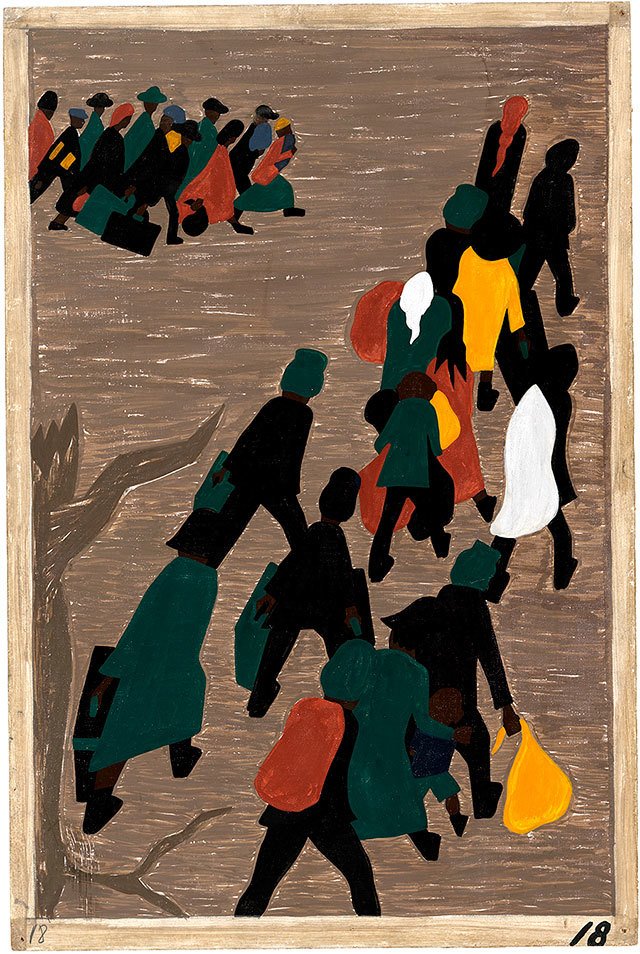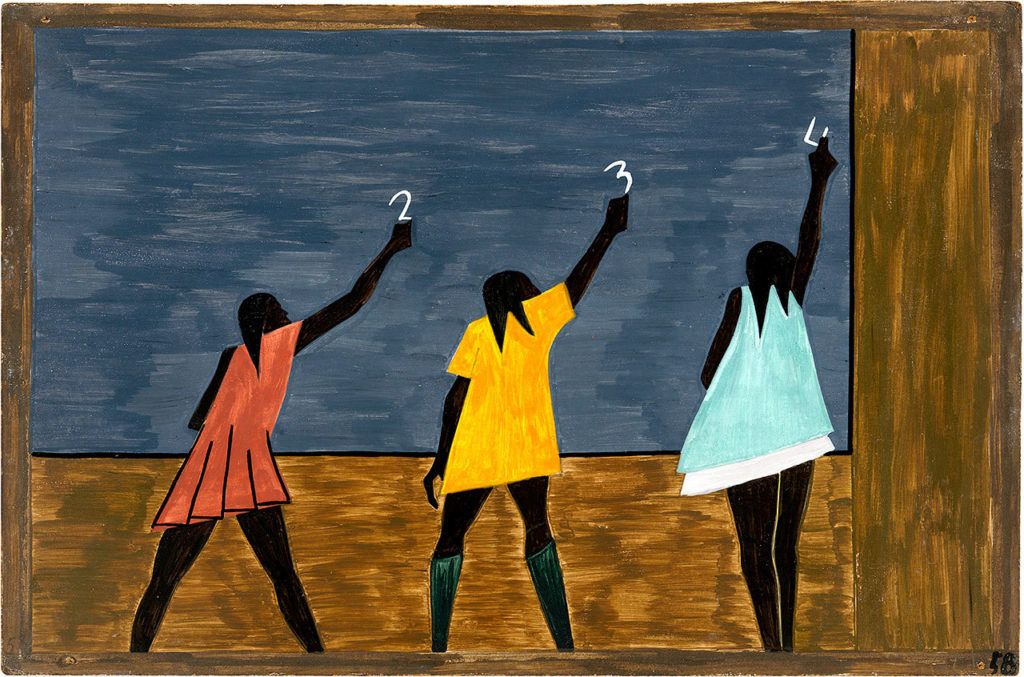The great American painter Jacob Lawrence would have turned 100 this year.
To celebrate that centennial, the Seattle Art Museum has scored a rare full exhibition of Lawrence’s narrative paintings — a masterpiece called “The Migration Series” — depicting the exodus of Southern black families about 100 years ago.
All 60 paintings in the series are displayed at SAM through April 23, and numerous programs in conjunction with the exhibit are planned.
Why is the exhibition rare? Because ownership of the series of 12-by-18-inch panels is split between the Phillips Collection in Washington, D.C., and the Museum of Modern Art in New York City. Phillips has the odd-numbered panels and MoMA has the evens. The paintings aren’t often all together in the same place at the same time.
The Phillips Collection exhibited the full series this past fall and MoMA showed it in 2015. The museums then agreed to lend the entire group of paintings to SAM, so that it could be seen in Lawrence’s adopted home city.
Lawrence and his wife, the late artist Gwendolyn Knight, moved to Seattle in 1971. Lawrence was beloved as an art professor at the University of Washington, where he taught for 15 years. The couple stayed in Seattle after his retirement and award of emeritus status. They were fans of SAM, where retrospective exhibits of their work have been hosted several times. The museum gallery where the series is hung is named for the couple, who both died in Seattle, he in 2000 and she in 2005.
Lawrence was a young man and a rising star living in Harlem in 1940 when — inspired by the public murals painted by New Deal artists — he set out to tell the story of the hundreds of thousands of African Americans who moved from the rural South, where many were farm hands, to the urban North, where they took factory jobs during the World War I era.
He was intimately acquainted with the migration story because his parents lived it. Lawrence was born in 1917 in Atlantic City, New Jersey, and grew up in Philadelphia and New York City.
The artist conceived of his series (then titled “Migration of the Negro”) as a single work of art.
In fact, during a period of about 18 months, he worked on all 60 panels at the same time. For example, he painted all the greens in the each painting at the same time so that the color was uniform. The other paint colors included black, brown, yellow, orange, red and blue — used in that bold, flat, almost cubist, and hard-edged signature Lawrence style.
February is Black History Month and it’s a good time to take students to see the series. Be warned that you will have to talk about slavery, lynchings, race riots, disease and segregation. But the series also depicts hope, love of family and the opportunities afforded by education.
Seattle artist Barbara Earl Thomas, the vice president of the national Jacob and Gwendolyn Knight Lawrence Foundation (which supports the exhibit), was a student of Lawrence’s soon after he arrived in Seattle. She described fainting when she realized her UW teacher was a prominent artist.
“You’ve been holding out on me,” she told Lawrence in class. “You’re famous.”
In fact, though, Lawrence was nothing short of brilliant, Thomas said. “He taught many lessons, for artistic expression and for life. The message was that you had to know something in order to describe it.”
Where Lawrence was humble and sweet, his wife was protective and careful to make sure he wasn’t known as “a black artist, but as an important American artist,” Thomas said.
“Gwen was fierce,” she said. “And she was right.”
Patricia Junker, SAM’s curator of American art, calls the completion of the Lawrence’s Migration Series an important point in the history of early modern American art.
“The series tells an American story,” Junker said. “Now is an extraordinary moment to return to it; the themes of social justice it explores are timeless. (The museum is offering) a wonderful opportunity for people to see this.”
If you go
“The Migration Series” by Jacob Lawrence, through April 23, Seattle Art Museum, 1300 First Ave., Seattle. Regular hours are 10 a.m. to 5 p.m. Wednesday, Friday, Saturday and Sunday and until 9 p.m. on Thursday. Cost to see the Lawrence exhibit includes the rest of the museum. Tickets are $19.95 general admission, $17.95 for seniors and military, $12.95 for teens and students with ID, and free for members and children.
Many programs in conjunction with the exhibit are planned, including a performance by Dance Theatre of Harlem on March 11 and 12, and a reading and lecture by Pulitzer prize-winning author Isabel Wilkerson (“The Warmth of Other Suns”) on March 29. For more information, call 206-625-8900 or go to seattleartmuseum.org.
Talk to us
> Give us your news tips.
> Send us a letter to the editor.
> More Herald contact information.


























